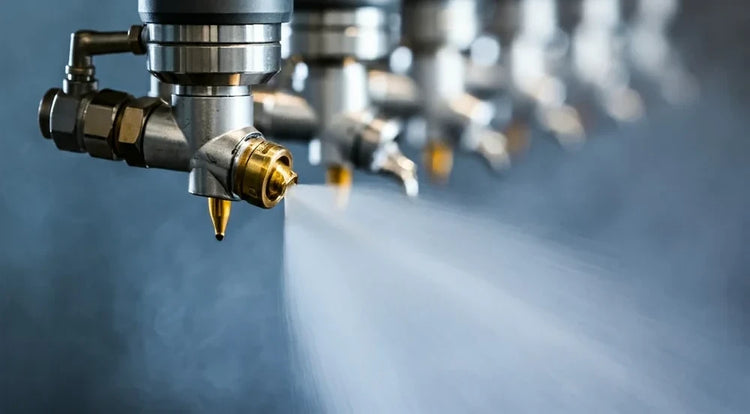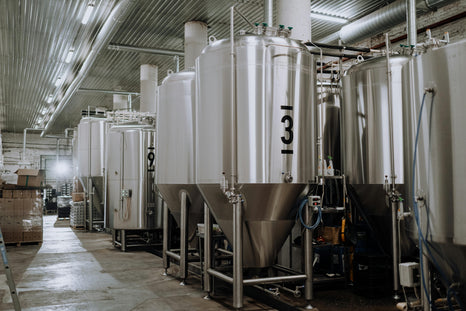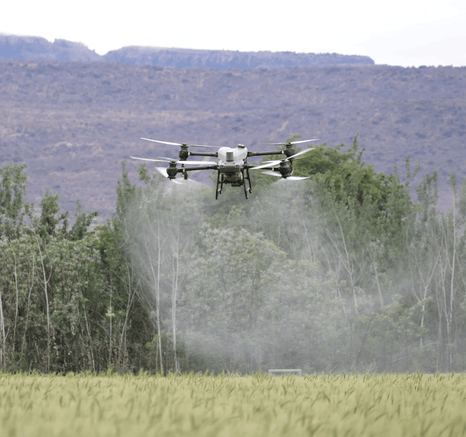Tank cleaning nozzles are a big deal for industries that rely on spotless tanks. Whether you’re in food production, pharmaceuticals, or chemical manufacturing, having the right nozzle can save you time, water, and money. This guide will walk you through everything you need to know about these essential tools.
Key Takeaways
- Tank cleaning nozzles are essential for efficient and thorough cleaning in various industries.
- Innovative designs like self-cleaning and smart features are making maintenance easier.
- Choosing the right nozzle depends on factors like tank size, cleaning requirements, and industry standards.
- Proper maintenance and troubleshooting can significantly extend the lifespan of your nozzles.
- Upgrading to eco-friendly and efficient nozzles can save resources and reduce costs.
How Tank Cleaning Nozzles Work
Tank cleaning nozzles are designed to spray cleaning solutions across the interior surfaces of tanks, ensuring efficient and thorough cleaning. They operate by directing pressurized liquid through precisely engineered orifices, creating spray patterns that maximize coverage. The process often involves high-pressure jets or rotating spray heads, which can reach even the most hard-to-access areas.
Here’s a simplified breakdown:
- Pressurized liquid enters the nozzle.
- The liquid is then directed through nozzles or rotating heads.
- Spray patterns are designed to ensure complete coverage of tank surfaces.
Key Components of a Tank Cleaning System
A tank cleaning system is more than just the nozzle. It’s a combination of several interdependent parts, including:
- Nozzle or Spray Head: The core component that determines the spray pattern and coverage.
- Pump: Provides the necessary pressure to drive the cleaning solution through the system.
- Control System: Regulates flow rate, pressure, and timing for optimal cleaning.
- Piping and Fittings: Connects the system components and directs the cleaning solution.
When these components work together, they ensure effective cleaning while minimizing water and chemical usage.
The Science Behind Spray Patterns
The effectiveness of a tank cleaning nozzle largely depends on its spray pattern. Spray patterns are carefully engineered to balance coverage and cleaning intensity. Here are some common types:
- Full Cone: Ideal for large, uniform coverage.
- Flat Spray: Best for targeted cleaning of specific areas.
- Rotary Spray: Combines motion and pressure to tackle stubborn residues.
The right spray pattern can mean the difference between a quick, efficient clean and hours of wasted effort. Choosing the right one depends on your tank’s size, shape, and what needs cleaning.
Understanding these basics can help you choose the right nozzle and maintain it effectively for long-term performance.
Self-Cleaning Nozzle Designs
Self-cleaning nozzles have been a game-changer for tank cleaning. These designs actively prevent clogs by flushing out debris during operation, which means less downtime for maintenance. This innovation has significantly reduced the need for manual cleaning, saving both time and labor costs.
Key benefits include:
- Reduced risk of clogging, ensuring consistent performance.
- Longer operational lifespan due to less wear and tear.
- Enhanced cleaning efficiency, especially in industries like food processing and pharmaceuticals.
Automation and Smart Features
The integration of automation and smart technology is transforming how tank cleaning nozzles operate. Modern systems can now adjust spray patterns, pressure, and flow rates automatically based on the tank’s specific cleaning needs. This adaptability ensures a thorough clean every time, without wasting resources.
Some standout features include:
- Sensors that monitor cleaning progress in real time.
- Programmable settings for different tank sizes and contaminants.
- Remote operation capabilities for improved safety and convenience.
Automation is not just about convenience; it’s about achieving consistent, high-quality cleaning results while minimizing resource usage.
Eco-Friendly Materials and Designs
As sustainability becomes a priority, manufacturers are focusing on eco-friendly materials and designs. Nozzles made from recyclable or biodegradable materials are becoming more common, along with designs that use less water and fewer chemicals.
Considerations for eco-friendly nozzles:
- Materials like stainless steel for durability and recyclability.
- Spray patterns optimized to minimize water wastage.
- Compatibility with green cleaning agents to reduce environmental impact.
Factors to Consider When Choosing Nozzles
Choosing the right tank cleaning nozzle isn't just about picking the first one you see. It's about understanding your specific cleaning needs. Tank size, the type of residue, and cleaning process requirements are the key factors to weigh. For example:
- Larger tanks may need nozzles with broader spray coverage or higher flow rates.
- Sticky residues like syrup or grease might require higher-pressure nozzles.
- For delicate applications, such as in the pharmaceutical industry, precision and material compatibility are critical.
Take a moment to evaluate your cleaning goals before diving into the options. It’ll save you time and money later.
Comparing Rotary and Stationary Nozzles
Rotary and stationary nozzles each bring something different to the table. Here’s a quick breakdown:
|
Feature |
Rotary Nozzles |
Stationary Nozzles |
|
Cleaning Action |
Rotating spray for dynamic coverage |
Fixed spray for consistent patterns |
|
Ideal For |
Tanks with complex shapes |
Simple, uniform tank designs |
|
Maintenance |
Requires more upkeep |
Low-maintenance |
|
Cost |
Higher initial investment |
More affordable upfront |
Rotary nozzles excel in reaching tricky corners, while stationary ones shine in straightforward cleaning tasks. Think about your tank’s design and cleaning frequency when deciding.
Customizing Nozzles for Specific Applications
Sometimes, off-the-shelf solutions just don’t cut it. Customizing a nozzle to fit your exact needs can make all the difference. Here are some customization options:
- Material Selection: Opt for stainless steel or other corrosion-resistant materials for harsh environments.
- Spray Pattern Adjustments: Tailor the spray angle to match your tank’s dimensions.
- Flow Rate Modifications: Ensure the nozzle delivers the right amount of cleaning agent without waste.
A customized nozzle might cost more initially, but it can lead to better cleaning results and lower operational costs over time.
In the end, the right nozzle is the one that fits your tank, your residue type, and your overall cleaning goals. Don’t settle for “close enough.”
Reducing Water and Chemical Usage
Using tank cleaning nozzles effectively can make a huge difference in how much water and cleaning agents you use. Modern nozzles are designed to distribute cleaning solutions evenly, which means less waste and more coverage. This is especially important for industries that need to clean large tanks regularly. With the right nozzle, you can cut down on water usage while still getting a thorough clean. Plus, using less cleaning solution also means fewer chemicals going down the drain, which is better for the environment.
Key benefits include:
- Efficient spray patterns that minimize waste.
- Advanced designs that work at lower pressures, saving water.
- Reduced chemical use for less environmental impact.
Improving Cleaning Speed and Coverage
Time is money, and tank cleaning nozzles can save you both. These nozzles are built to cover more area in less time, which means you can clean faster without sacrificing quality. Whether you're using a rotary or stationary nozzle, the goal is the same: maximize coverage with minimal effort. Some newer models even adjust spray patterns automatically based on the tank's size and shape, giving you a consistent clean every time.
Here’s how they improve speed and coverage:
- Wide spray angles that reach every corner.
- High-impact sprays for faster dirt removal.
- Smart designs that adapt to different tank configurations.
Minimizing Maintenance and Downtime
Nobody wants to stop production for cleaning, but it’s a reality for many industries. The good news is that modern tank cleaning nozzles are easier to maintain, which means less downtime. Self-cleaning nozzles, for example, help prevent clogs and reduce the need for constant checks. Regular maintenance, like inspecting seals and cleaning filters, can also extend the lifespan of your nozzles, keeping them in top shape for longer.
Tips to minimize downtime:
- Invest in self-cleaning nozzles to reduce manual cleaning.
- Schedule routine maintenance to catch issues early.
- Keep spare parts handy to avoid delays during repairs.
Efficient cleaning systems aren’t just about saving time—they’re about creating a smoother workflow that benefits both your team and your bottom line.
Food and Beverage Industry Applications
In the food and beverage world, keeping things clean isn't just a preference—it's non-negotiable. Tank cleaning nozzles ensure storage tanks for ingredients and finished goods stay spotless. Their precision cleaning prevents cross-contamination, which is crucial for products like dairy, beer, and juices. You'll often find these nozzles hard at work in breweries, dairy plants, and soft drink facilities, where hygiene directly impacts product safety and quality.
Pharmaceutical and Biotech Uses
When it comes to pharmaceuticals and biotech, cleanliness is practically a science. Tank cleaning nozzles are indispensable for sterilizing reactors, mixers, and storage units. They leave no corner untouched, reducing the risk of contamination that could compromise entire batches of medicine or other sensitive products. Plus, their construction often includes chemical-resistant materials, making them ideal for handling reactive or corrosive substances.
Chemical and Industrial Cleaning Solutions
In chemical plants and heavy industries, tank cleaning nozzles tackle some of the toughest cleaning jobs. Whether it's removing residues from mixing vessels or cleaning tanks used for hazardous chemicals, these nozzles are up to the task. Their robust designs can withstand extreme conditions, ensuring thorough cleaning without damaging equipment. For industries dealing with caustic or abrasive materials, these tools are a game-changer for maintaining operational efficiency.
Routine Maintenance Tips
Keeping your tank cleaning nozzles in top shape doesn’t have to be complicated, but it does require consistency. A little upkeep can save you from costly repairs down the road. Here’s what you should do:
- Inspect Regularly: Look for clogs, cracks, or wear and tear. Even small damage can mess up spray patterns.
- Clean Thoroughly: After every use, rinse the nozzles with water to remove debris and chemical buildup. Use a soft brush if needed, but avoid abrasive tools.
- Replace Worn Parts: Over time, nozzle tips and seals wear out. Swap them before they fail to keep everything running smoothly.
Troubleshooting Common Issues
Even with good maintenance, things can go wrong. Let’s tackle some common problems:
- Uneven Cleaning: If the spray isn’t reaching all areas, check the nozzle alignment and pressure settings.
- Clogging: This usually happens due to debris like rust or dried chemicals. Remove the nozzle and clean it gently with a nylon brush or air pressure.
- Leaks: Inspect seals and connections. Damaged seals are a common culprit and easy to replace.
Pro Tip: Never use sharp objects like paper clips to clean nozzles. They can permanently damage the spray pattern.
Extending Nozzle Lifespan
Want your nozzles to last longer? Here are some practical tips:
- Use filtered water to minimize debris entering the system.
- Operate within the recommended pressure range to avoid overloading the nozzles.
- Store nozzles in a dry, clean place when not in use to prevent corrosion.
A well-maintained nozzle not only delivers better cleaning performance but also helps you save on water, chemicals, and replacement costs.
Achieving Sustainability Goals
Tank cleaning nozzles are evolving into a key tool for industries aiming to hit their sustainability targets. These nozzles are designed to reduce water and chemical usage without compromising cleaning quality. By optimizing spray patterns and flow rates, they ensure minimal resource waste. This efficiency not only conserves valuable resources but also lowers the environmental footprint of industrial cleaning processes.
- Precise spray patterns minimize water wastage.
- Reduced chemical usage prevents harmful environmental contamination.
- Materials used in modern nozzles are often recyclable or biodegradable, further supporting eco-friendly practices.
Adopting advanced tank cleaning nozzles is a practical step toward sustainability, blending operational efficiency with environmental responsibility.
Cost Savings Through Efficiency
Switching to efficient tank cleaning nozzles can save businesses a lot of money. These systems are engineered to do more with less—less water, fewer chemicals, and reduced labor. The result? Lower operational costs and a faster return on investment.
Here’s how savings stack up:
|
Cost Area |
Savings Potential |
|
Water and Chemicals |
Up to 30% reduction |
|
Labor Costs |
Shorter cleaning cycles, less effort |
|
Equipment Longevity |
Reduced wear and tear |
By cutting down on these expenses, industries not only save money but also improve their overall operational efficiency.
Meeting Regulatory Standards
Environmental regulations are getting stricter, and industries need to keep up. Tank cleaning nozzles help businesses meet these requirements by reducing waste and emissions. They also support corporate sustainability goals, which can enhance a company’s reputation.
- Helps meet waste reduction standards.
- Reduces chemical runoff, aiding compliance with environmental laws.
- Positions the company as a leader in sustainable practices.
Incorporating tank cleaning nozzles isn't just about cleaning—it’s about aligning with the future of responsible business practices. Adjustable spray nozzles offer precise control to meet both operational and regulatory demands.
Wrapping It All Up
So, there you have it—tank cleaning nozzles are more than just a piece of equipment; they’re a real game-changer for industries that need spotless tanks. From cutting down on water and chemical use to saving time and money, these nozzles make life a whole lot easier. Plus, with all the new tech coming out, like self-cleaning designs and smart systems, the future looks even brighter. Whether you’re in food production, pharmaceuticals, or any other industry, investing in the right nozzle can make a big difference. Keep them clean, maintain them well, and they’ll keep your operations running smoothly. Here’s to cleaner tanks and smoother workflows!












